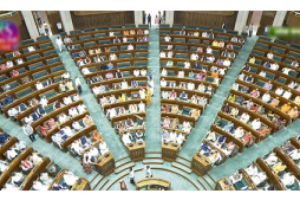The world is in the midst of a global climate crisis—one that is impossible to ignore. To avert the worst-case climate scenarios, countries around the world have committed to reaching carbon net-zero. Addressing sustainability across all industries is a worldwide priority, and DA group, India is no exception.
The impacts of climate change include more extreme weather and natural disasters, chronic drought and economic instability. To match the urgency of this crisis, Durgesh Agrotech Pallishree Pvt Ltd. (DAPPL) has deployed innovative solutions that maximize nature’s ability to fight climate change while bolstering resilience for the most precious ecosystems and vulnerable communities.
DA Group India has pledged to achieve carbon net-zero by 2030 in Gujarat and Maharashtra while partnering with Pallishree Limited in order to de-carbonize blockchains through the use of the new open-source tools. Additionally, Durgesh Agarwal, Director – DA Group and Pallishree Limited are conducting new researches with leading experts to evaluate energy consumption across the Cities and States with a mission to restore Earth and fight against the evils of deforestation.
Advertisement
“We are always striving to find new ways to revitalize and restore the environment. Ultimately, we are here to leave the world in a better place than we found it while inspiring others to do the same for an Earth of tomorrow that is greener and brighter for all,” said Durgesh Agarwal.
DAPPL’S focus on planting and conserving trees around will fight deforestation causing habitat restoration for millions of animals, humans and all future generations to come.
Furthermore, by conserving existing trees and planting new trees, DAPPL will help save endangered animals.
However, enabling a low-carbon future will require ambitious commitments and comprehensive approaches that are nature-based. Moreover, nature can offer some of the most cost-effective strategies in the climate playbook, provided they’re deployed in concert with a transition to renewable energy which if implemented correctly, carbon markets could both accelerate action to combat climate change and deliver much-needed co-benefits for nature and people.
Unravelling Carbon Offsets & How They Work
By definition, carbon offset is an “action or activity (such as the planting of carbon offsets trees or carbon sequestration) that compensates for the emission of carbon dioxide or other greenhouse gases to the atmosphere.”
In other words, carbon offset is a method we can use to combat global warming by erasing the carbon footprints we generate every day. Our total footprint includes many greenhouse gasses, but most carbon offsets are geared toward tackling CO2 emissions since they are the chief cause of climate change.
Nearly everything that makes our lives simpler or more convenient can contribute to climate change. Whether that’s driving your vehicle, processing your drinking water, or just charging your phone, all these actions produce carbon emissions. As a species, humans are consuming resources at a rate never seen before, which is exactly why reducing the carbon footprint has never been more important. Fortunately, many individuals and companies are working to combat the problem, hoping it may not be too little, too late.
Carbon Offset Tree Planting Project By DAPPL
While one tree a day falls short of what’s needed, the catchy motto “Planting a tree a day helps keep emissions at bay” certainly encourages action that can do a whole lot of good. Every little bit counts, even one tree. In fact, maybe it’s time to return to ancient wisdom: An ancient proverb says, “the best time to plant a tree is twenty years ago. The second-best time is now.”
Planting trees is foundational to carbon offsetting.
DAPPL has undertaken strategies to offset carbon pollution with trees through the process of:
Afforestation: Planting trees in a spot that previously didn’t have them in order to fight environmental challenges.
Reforestation: Planting trees where forests have been clear cut or deforested, trying to bring back or revitalize a habitat that humans decimated.
Deforestation: Giving incentives to landowners to keep forests intact when they could otherwise clear land for agriculture and other profit.
How DAPPL Functions
- DAPPL conserves existing trees and plants new trees to replace ones that have been removed through deforestation.
- The Process of Reforestation is conducted on a monthly basis and in order to do this, DAPPL runs their own planting operations that include working closely with nurseries, environment research centres and planting site executives.
- DAPPL has also partnered with various groups to expand its efforts and reach a global population.
- DAPPL has been using technology to make tree planting easy and has been providing support, advice and solutions to citizens and companies helping them transition towards a sustainable future which is followed by a targeted seeding program that increases the rate of planting and facilitates access to remote areas.
Reducing Carbon Footprint And Way Ahead
Tree planting for carbon offsetting or using another offset strategy to erase emissions can seem daunting, but the journey of a thousand miles begins with a single step and DAPPL has been effectively working towards making cities and states carbon neutral and carbon negative eventually. However, in order to accomplish this, DAPPL has been bringing natural and technological innovations forward to help investors, practitioners and decision-makers identify the what, where, when, and how of working with nature—together—to face civilization’s greatest challenge.
“The point is that it would be impossible—and frankly arrogant—to think that we humans could do it alone without nature. We need to approach the problem with the right level of humility and respect for nature’s incredible power and enlist all of its amazing innovations in the challenge ahead of us,” says Durgesh Agarwal.
For More Information Visit:
Website: https://dagroupindia.com/
Instagram: https://instagram.com/dagroupindia?utm_medium=copy_link
Advertisement












